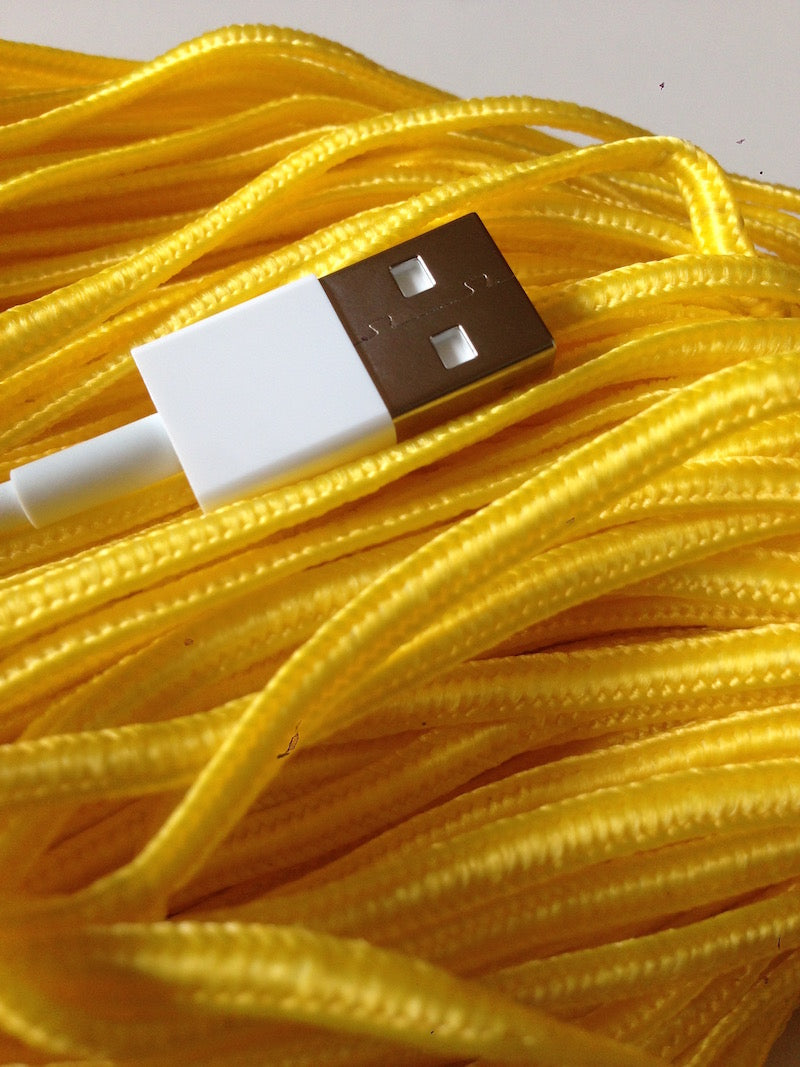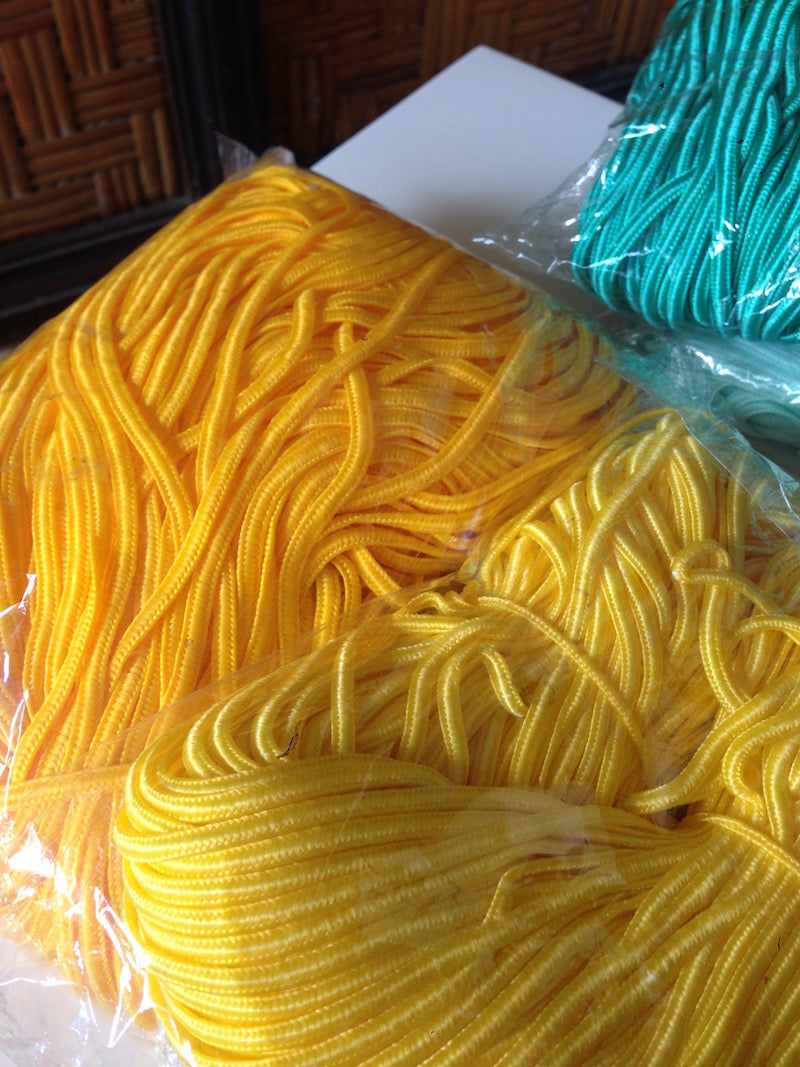Soutache Braided Cords (10m) - Yellow
Soutache Braided Cords (10m) - Yellow is backordered and will ship as soon as it is back in stock.
Pickup available at Bead Shack
Usually ready in 24 hours
Soutache cord can be used for making necklaces and jewellery. For images on soutache jewellery, click here. (link to images on Google)
This cord is about 5mm across and about 2mm thick in the centre, and the outer edges of the cord is about 1mm thick.
Quantity per pack: 10 metres
So many lovely jewellery pieces are now being made with this wonderful medium, adding beads, swirls, textures, shapes, it can be as wondrous as your imagination can make it!
If you want this polyester cord for weaving on looms or making macrame or large pieces of art, we also have these cords in 100 metre packs - a pack might be the way to go.
** Please note, the picture of the yellow and banana yellow is in the one shot, to show you the difference in the colours. I have called the lighter one yellow, the darker one banana.
I'm sure you can use these braided cords for so many things other than soutache on clothing or jewellery. What about as a braid sewn onto cushions or soft handmade bags, in fact anywhere you please - around the bottom of lampshades even!
Soutache (pronounced SOO-tash) is a narrow, flat, ornamental braid used to trim garments & a common element in the French art of passementerie. It is also referred to as "Russian braid".
Developed in the 16th century, passementerie encompasses a wide range of trims, braids and tassels used as decoration on haute couture, draperies, furnishings and even military uniforms. To make the “galoons” most often seen on military uniforms, swirls of soutache were stitched flat as they are today. It is also a bookbinder's term for the thin braid applied to the top and bottom of the inside of a book's spine to secure its pages.
In Soutache & Bead Embroidery, lengths of soutache are "stacked" to create a more solid visual element and a stable base for the addition of beads. Soutache can be curved and shaped into many patterns and because it is essentially a textile, soutache jewellery has two wonderful properties; it is extremely light-weight and, like a well-made piece of clothing, it will conform to the wearer’s body.
A soutache is most commonly braided in a herringbone pattern. Two threads are placed on opposite sides of a cord and, starting with the left thread, it is placed over the middle cord and right thread. Then alternating with the right one, the pattern continues until a braid is formed. This design is called a French herringbone pattern.







